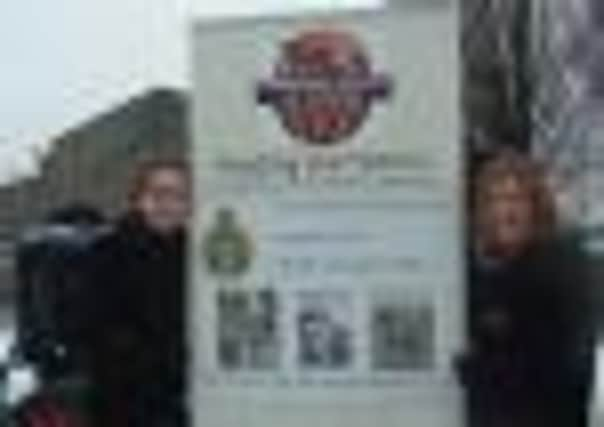Museum leaps forward by going back to tell the Land Girls’ stories


Considering the pride with which Yorkshire’s farming community talks about its past it has always been a source of amazement to me that the county’s farmers have largely not supported a museum dedicated to their industry.
While farmers and farming families have visited over the years and a reasonable number have offered artefacts, there are too many who have either never been involved or worse, are still not aware of the existence of the Yorkshire Museum of Farming at Murton, near York.
Advertisement
Hide AdAdvertisement
Hide AdIt is now 27 years since this independent charitable concern opened its doors to the general public offering considerable insight into agricultural working throughout the last century, but it has struggled to survive pretty much all of the time. It is only through donations and footfall reaching appropriate levels that it can look to the future with any confidence.
Four years ago the current curator Esther Graham arrived at the 15-acre site of Murton Park, home of the museum, and fortunes are now showing signs of changing. This year, when the museum reopens in spring, visitors will be able to experience its first all-new exhibition since it opened and considerable monies have been spent.
“We discovered, as we were working towards meeting museum standards, that we had a significant amount of Women’s Land Army material both textile and print, but at the time we didn’t have the facilities to do justice to what we had. We also wanted to build upon the collection before then putting together a display for our visitors.
“What we have found is that there is a very genuine and enthusiastic interest in anything to do with the Women’s Land Army and with recent TV and stage shows being devoted to it there has been a raising of its profile.
Advertisement
Hide AdAdvertisement
Hide Ad“In 2008 Women’s Land Army veterans also received a commemorative medal and that sparked off the media interest further, so we thought it would be appropriate to tap into it and give the museum a boost with a new exhibition.
“But it’s not just about putting things on display. We wanted to run outreach activities to bring more people in and create different ways of involving people with the collection.”
Preparing and researching the subject matter in greater depth brought about numerous new contacts and new artefacts. But Esther realised that to make the best out of what they were researching it would require structural alterations to the Four Seasons building that houses much of the existing collection.
“Alterations to buildings don’t come cheap. We applied to the Heritage Lottery Fund for the £60,000 we needed.
Advertisement
Hide AdAdvertisement
Hide Ad“It’s always difficult to attract money and everyone else is trying too, but we received it and we embarked on what is going to be one of the biggest changes the museum has ever seen. In that figure was funding for a part-time position as an outreach officer, but the major share went on structural work in the building and such as display cases.”
Naomi Beeley is responsible for community outreach for the Women’s Land Army project. Naomi also worked on a Second World War exhibition for schools in Hartlepool. She’s well versed in the era and is thoroughly immersed in Women’s Land Army material.
“World War II is interesting for everyone. Nearly all of us have some connection via grandparents and parents, and the Women’s Land Army holds a very special, warm place in many girls’ hearts. It was a time when girls worked together perhaps more closely than at any time previously or since.
“I’ve spoken to so many of those who were involved and we have managed to acquire much more than we had initially. Photographs, scrapbooks, poems, songs, armbands have all been kept and it’s clear that being involved meant such a lot to them.
Advertisement
Hide AdAdvertisement
Hide Ad“While we are conscious of getting the balance between good and bad experiences, it’s fair to say that most of their memories are good ones, and some are also quite good fun.
“By far the most important thing for all of the girls involved in the Women’s Land Army was the friendship and camaraderie between them all that still exists today. Almost without question they see themselves as sisters.”
What Naomi also uncovered was the opinion that their era was a quite different time and that there was a doubt in their minds that girls of today could cope with the kind of work they had to do.
“One lady told me quite categorically that she couldn’t at all imagine how young girls of today could cope with joining up and undertaking all of the tasks she and her friends did back then. She not only went out on a tractor, driving it, she also learned how to take out and clean the plugs, change the oil and undertake basic maintenance.
Advertisement
Hide AdAdvertisement
Hide Ad“She didn’t think that young girls would even contemplate being involved let alone do all of that. There were also quite a few Women’s Land Army girls who ended up marrying either farmers or farm workers so it could be said that World War Two was a powerful influence on the social life of the countryside.”
Guest speaker on women’s war
On Saturday February 23, as part of the lead up to the new Women’ Land Army Exhibition there will be a talk given by a Sheffield Hallam University lecturer on Women in the Countryside in World War II.
It takes place 1.30pm – 3.30pm and wartime refreshments are included in the ticket price £4.50.
Peter Draper is trustee and site director at Murton Park. He’s excited about the new exhibition and is delighted with the progress being made by Esther and Naomi.